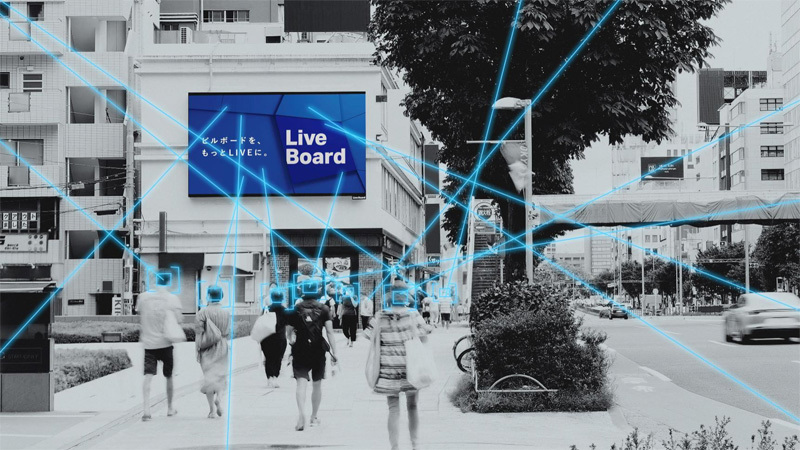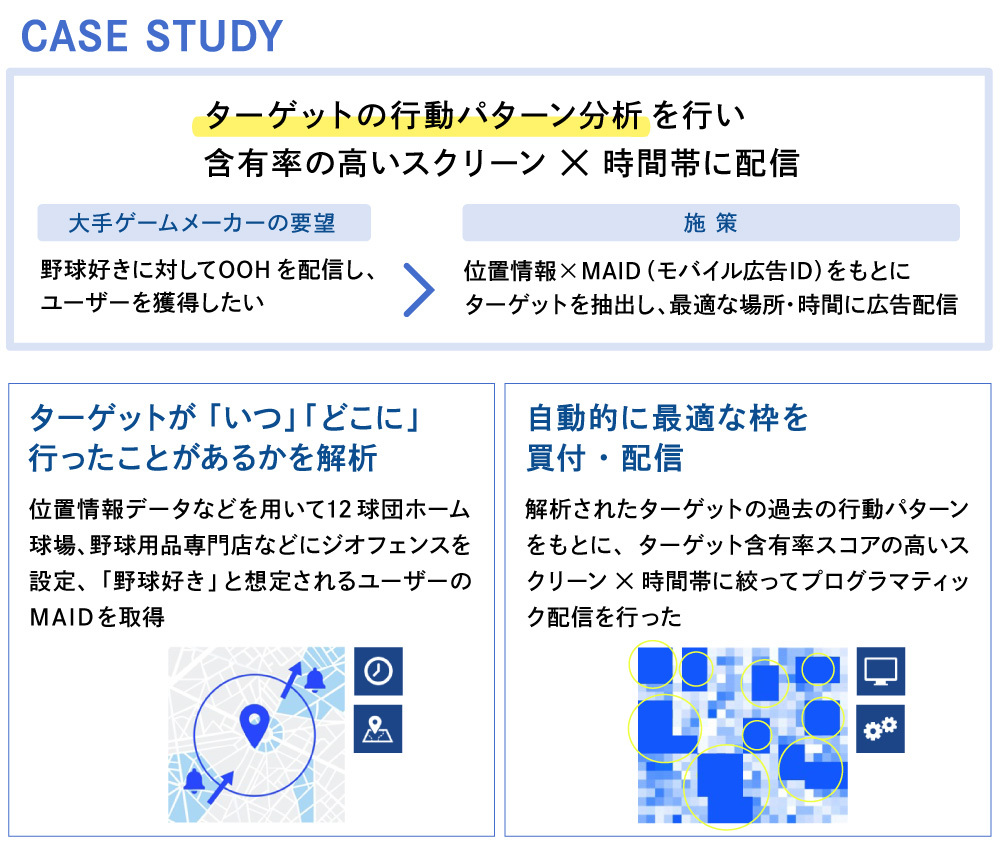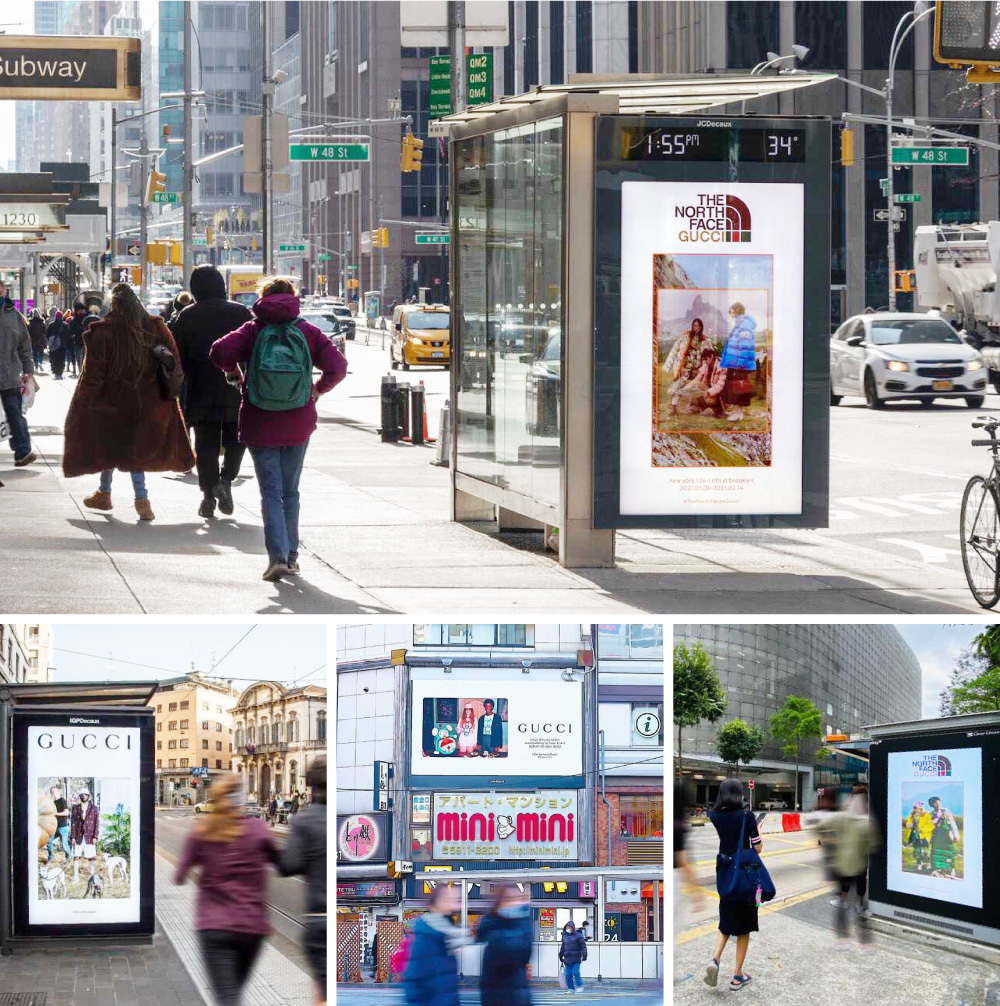Note: This website was automatically translated, so some terms or nuances may not be completely accurate.
The Current State of "Programmatic OOH" as Seen by LIVE BOARD

Shintaro Takayama
LIVE BOARD, Inc.

OOH (Out of Home: outdoor and transit advertising) is currently evolving to be as flexible as digital advertising, allowing for people-centric ad placement and one-stop effectiveness verification.
Shintaro Takayama of LIVE BOARD introduces "Programmatic OOH," which networks DOOH (Digital Out of Home: advertising utilizing digital signage), enables flexible transactions and delivery, and allows centralized management of ad slots, metrics, and delivery.
LIVE BOARD
A joint venture company established in 2019 by NTT DOCOMO and Dentsu Inc. Pioneered impression-based (ad viewership) delivery in Japan's OOH sector. Even under conditions prone to foot traffic fluctuations, like the COVID-19 pandemic, it delivers ads and operates a billing system based on the estimated number of people assumed to see "that ad, at that time, in that place," achieving near-real-world accuracy. Furthermore, by combining its proprietary network—which aggregates diverse DOOH locations nationwide, including outdoor, indoor, train interiors, and station concourses—with big data from Japan's largest carriers, it enables people-centric delivery based on targeting by gender and age group, something traditionally difficult with OOH.
The Black Ship Arrives in Japan's OOH Sector
Before joining LIVE BOARD, I was only involved in the digital space. Honestly, I viewed OOH as something I didn't really understand, as the norms of digital simply didn't apply.
However, I came to recognize that OOH has always been seamlessly integrated into daily life, and that it is a unique medium capable of delivering compelling messages through large, diverse screens. This revealed a distinct appeal not found in other media. I also see significant value in the "programmatic OOH" initiative, which combines advanced technology to create new value, and we are actively experimenting to bring this concept to the Japanese market as quickly as possible.
I've also had increasing opportunities to work with leading OOH companies from Europe, the US, and other regions. Through discussions with them, industry events, and social media outreach, I've come to tangibly feel that OOH is actually a global growth area. Driving this is the new concept of "programmatic OOH," which seems to be gaining traction, particularly in Europe and the US, over the past few years. Furthermore, global advertising delivery players are now entering the Japanese market one after another.
The Disappearing Barriers with Overseas Markets
Alongside the wave of "programmatic OOH," buying demand from overseas is surging into Japan's OOH sector.
Until now, Japan's OOH market was characterized by cumbersome processes—symbolized by the need for individual inquiries for each of the numerous "ad slots"—and its advertising effectiveness was notoriously difficult to quantify. When it came to handling advertising requests from overseas, the burden on intermediary advertising agencies was likely even greater. Here, we present two examples from our company where the flexibility of "Programmatic OOH" proved invaluable in meeting this inbound demand from abroad.
For a domestic campaign opportunity, we received an urgent request from a certain advertiser via our Montreal-based partner Hivestack to launch an OOH campaign immediately. Contact came on a Thursday morning, but with the campaign window fixed to end just three days later on Sunday, we completed all procedures—including screen selection and creative review—by early evening that same day. We then launched the campaign in highly relevant downtown areas.
This may be an extreme example, but flexibility is a major strength of "programmatic OOH." By centrally managing many of the steps required from submission to ad delivery through our SSP (※1), we achieve a speed closer to digital advertising than was previously conceivable with traditional OOH. It might be akin to purchasing advertising space in New York's Times Square from Japan just hours later. In this way, "programmatic OOH" clearly lowers the barriers of distance and time between Japan and overseas markets.
※1 SSP: Supply-Side Platform / A platform operated by media companies that provide advertising inventory.
Enabling global programmatic delivery
Another case study also involves inbound initiatives from overseas. A certain global luxury brand launched a worldwide campaign.
To deliver cross-city distribution across DOOH in London, New York, Milan, Singapore, and Tokyo, a London-based advertising agency centrally purchased global advertising inventory across cities, including billboards and street furniture. Our company provided access to billboard advertising inventory located in high-income areas within Tokyo via Hivestack's DSP (※2). This effectively became the world's first truly global "programmatic OOH" campaign.
In Tokyo, multiple campaigns ran consecutively over approximately three months, with over 30 different ad creatives displayed in rotation. While flexible creative swapping is inherently challenging for OOH, our company achieved dynamic creative replacements and screen switching for each campaign in under a day. The high degree of standardization and automation inherent in "programmatic OOH" enables us to respond swiftly to client needs.
We've introduced two inbound case studies so far. This represents a pure increase in opportunities for the media owners we collaborate with, offering the added benefit of effectively utilizing vacant slots through purchases by major overseas brands. Moving forward, we aim to widely promote Japan's diverse DOOH advertising slots overseas, showcasing the appeal of each city and location.
※2 DSP: Demand-Side Platform / An advertising delivery tool used by the demand side (advertisers). It provides functions to help advertisers maximize advertising effectiveness.
People-Based OOH is Also Advancing Domestically
"Programmatic OOH" initiatives are already accelerating domestically. Here's an example of audience targeting (*3) utilizing MAID (Mobile Advertising ID), assigned to individual mobile devices.
We received a request from a major game developer to deliver ads to "baseball fans." We achieved location-based DOOH delivery by extracting MAIDs based on target behavior patterns.
First, we identified locations likely to have high concentrations of baseball fans. For example, professional baseball home stadiums attract spectators, while specialty baseball stores are frequented by players. Geofences—boundary lines—were set around these selected locations. During a specific period, we extracted MAIDs that appeared within the area a predetermined number of times or more.
We then scored the target inclusion rate for each screen based on their daily behavior patterns. This programmatic approach automatically purchased ad slots for screens and time slots likely to have a high concentration of the "baseball enthusiast" target audience nearby.

While this is one example utilizing location data, today, DOOH delivery centered even more on "people" using first-party and third-party data held by clients and ad agencies has become a reality.
As explained, this more flexible, data-driven "programmatic OOH" is a global growth area. What began as tentative efforts with domestic partners is now expanding to collaborations with partners worldwide.
It's like reinventing OOH, which is said to have originated from ancient cave paintings. It's a continuous process of trial and error, but we will continue to create a new normal for OOH that breaks free from conventional wisdom.
※3: Audience Targeting: A targeting method that delivers ads based on data combining audience (user) attributes and behavioral history information.
Was this article helpful?
Newsletter registration is here
We select and publish important news every day
For inquiries about this article
Back Numbers
Author

Shintaro Takayama
LIVE BOARD, Inc.
Client Services Department
Manager
After working at a major internet advertising agency and a UK-based mobile advertising startup, he joined LIVE BOARD in April 2020. He is collaborating with domestic and international advertising agencies and DSP operators to localize programmatic OOH, which is developing primarily in Europe and the US.



